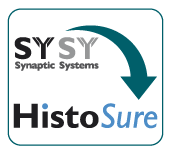|
|
|
|
| Cat. No. HS-427 017 |
200 µl purified IgG, lyophilized. Albumin and azide were added for stabilization. For reconstitution add 200 µl H2O. Then aliquot and store at -20°C to -80°C until use. Antibodies should be stored at +4°C when still lyophilized. Do not freeze! |
| Applications | |
| Clone | GHH45/97A2 |
| Subtype | IgG2b |
| Immunogen | Synthetic peptide corresponding to AA 1284 to 1291 from mouse PTPRC (UniProt Id: P06800-1) |
| Reactivity |
Reacts with: mouse (P06800-1). No signal: human, rat. Other species not tested yet. |
| Specificity | The antibody recognizes all CD45 isoforms. |
| Remarks |
IHC-Fr: MeOH fixation is recommended. |
| Data sheet | hs-427_017.pdf |
 Important information
Important information|
|